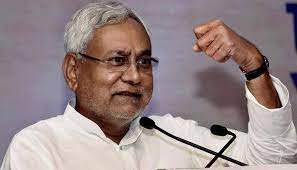
In a significant move, Bihar Chief Minister Nitish Kumar has put forth a proposal to elevate the reservation quota for government jobs and educational institutions in the state. The proposition aims to increase reservations for Scheduled Castes (SC), Scheduled Tribes (ST), Other Backward Classes (OBC), and Extremely Backward Classes (EBC) to 65%. This allocation does not include the central government’s existing 10% reservation for individuals from Economically Weaker Sections (EWS), thus raising the total reservation to 75%.
This proposal challenges the Supreme Court’s 1992 ruling that capped reservations at 50%. Nitish Kumar announced his intent to implement these changes within the current legislative session, subject to necessary consultations. Additionally, the Chief Minister advocated for the removal of the three percent reservation for OBC women.
Under the proposed adjustments, SC candidates would receive a 20% reservation, while OBCs and EBCs would benefit from a substantial increase to 43%, up from the earlier 30%. The proposal also introduces a 2% reservation for ST candidates.
Presently, Bihar’s reservation levels stand at 18% for EBCs, 12% for Backward Classes, 16% for Scheduled Castes, and 1% for Scheduled Tribes.
This proposal materialized shortly after a comprehensive report on the contentious state-wide caste survey was presented in the Bihar Assembly. The release of this report led to claims by the opposition Bharatiya Janata Party (BJP) that the ruling Janata Dal (United)-Rashtriya Janata Dal (RJD) alliance had manipulated data related to the Yadav community and Muslims. The BJP’s allegations prompted a strong response from Nitish Kumar, who criticized the opposition’s accusations. Previously, Tejashwi Yadav of the RJD had challenged critics of the caste survey to provide evidence.
The Yadavs constitute the largest OBC sub-group in Bihar, accounting for 14.27% of the state’s population. According to the Bihar caste survey, over 60% of Bihar’s population belongs to backward or extremely backward classes, with 36% from EBCs, 27.1% from Backward Classes, and 19.7% from Scheduled Castes. Scheduled Tribes represent 1.7% of the population, while the General Category makes up 15.5%.
Additional data released on the same day revealed that 34% of families in the state survive on a monthly income of less than ₹6,000, with 42% of Scheduled Caste and Scheduled Tribe families living in poverty. The data also indicated that less than 6% of individuals from Scheduled Castes have completed their schooling, a figure that rises to 9% overall.
The release of the first batch of caste survey data last month had led to speculation about the possibility of increasing quotas for backward classes and other marginalized communities. The Bihar government’s caste survey, now a contentious issue following calls for a nationwide survey by the opposition, began making headlines again in November the previous year, following the Supreme Court’s backing of the central government’s 10% EWS quota.
The Supreme Court affirmed the non-discriminatory nature of the EWS quota, introduced shortly before the 2019 Lok Sabha elections, and stated that it did not alter the basic structure of the Constitution.
Sources By Agencies

